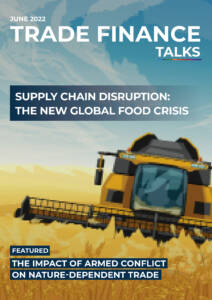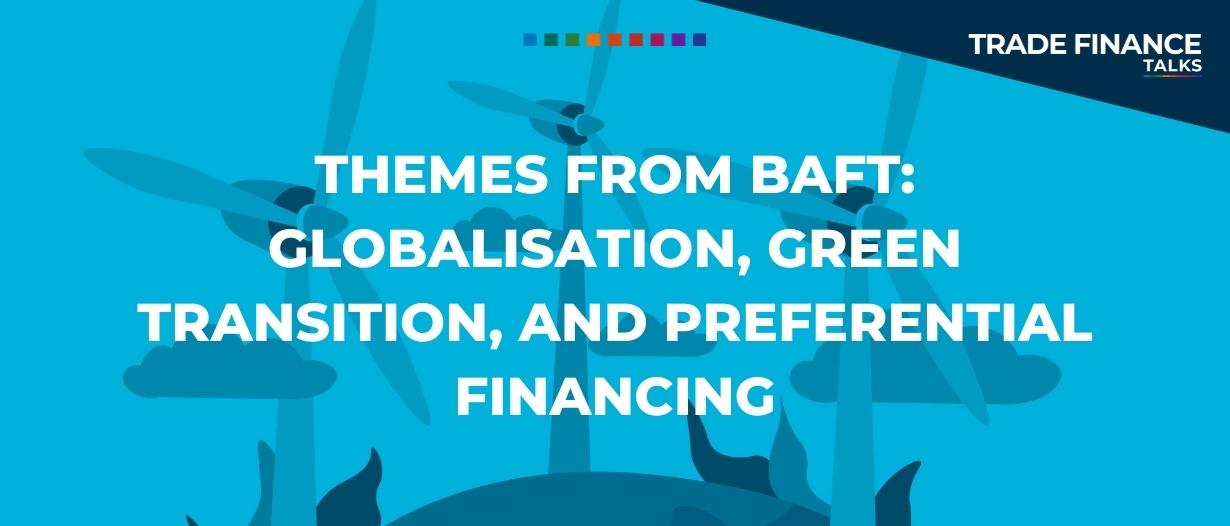TFG was delighted to partner with BAFT for their 2022 Global Annual Meeting in Washington.
Throughout the three day event, attendees heard from many experts discussing the current state of the industry, what they learned during the past few years, where the industry is headed, and the challenges and opportunities that lie ahead.
Here are some of the key themes from throughout the event.
BAFT’s role in implementing ESG best practices for trade and transaction banking
There is certainly a lot of ground to cover with regard to establishing robust definitions and standards.
BAFT has established its own working group to explore these but is also collaborating with the ICC and others to ensure that there is a clear set of definitions for ESG in a transaction banking context.
Once standards are established, the next step is to develop the reporting and KPIs; these are where the real benefits come in but you must have the standards and definitions first.
“BAFT has a group looking at what types of reporting should be done, what the relevance is, and what KPIs should be used,” Tod Burwell said.
The COP26 net-zero alliance has been working towards creating a carbon-neutral environment, but their work does not have a transaction banking context to it – which is something that the BAFT working group is hoping to address.
The last piece is to educate the stakeholders, policymakers, and advocates so that the policies we end up with do not exclude certain markets.
Not all parts of the world live in the same circumstances so any policy needs to be carefully designed to not exclude anyone.
Many experts also warn about implementing solutions that are policy-led rather than client-led.
Statistically, 80% of carbon emissions are generated by G20 countries, so it does not necessarily make sense for policies generated for this advanced minority to be applied to the geographies that only generate the 20% of emissions.
Globalisation is here to stay
There has been substantial discussion recently about the fragmentation of global markets into regional trading blocs.
While this may occur, there is no doubt that some degree of globalisation is here to stay.
There are certain countries, like Korea and Germany for example, that naturally do not have very many of their own commodities, meaning that they are forced to source these on a global basis.
These countries also tend to have specialised economies that rely on global exports.
This reliance from many different economies on global markets means that globalisation will not go away any time soon.

Energy transition agendas
All the talk about carbon emissions and the need to transition to green energy has created a sense of urgency in the industry.
Unfortunately, it is simply not feasible to transition to zero-carbon overnight.
Too many countries have energy infrastructures so heavily reliant on brown energy sources that they will need to spend years, if not decades, building up green energy infrastructure.
We do need to start the transition as soon as possible, but we also need to be cognizant of the required timelines for an effective transition.
It is also important to bear in mind that a lot of companies, especially smaller companies, do not have massive amounts of resources to commit to making a green transition.
“Many small and medium-sized enterprises globally, although agile and adaptable, may face difficulties in developing an ESG strategy or have little data and know-how to supplement this,” Manish Kohli, global head of liquidity and cash management at HSBC, said.
“They are often less advanced in transition planning compared to larger multinationals, meaning they require a different approach and a different level of support.”
The incentivisation of preferential financing
Preferential financing is when a bank agrees to offer a lower rate of financing to a client so long as that client adheres to a certain set of green commitments.
The idea, in theory, is to financially reward companies that stick to their green commitments.
Some of the banking leaders at the conference fear that, despite being a noble concept, it may not work as well in practice.
This fear stems from the idea that such a model misaligns the green incentives from the financial ones.
While banks would like to see their clients succeed in their green commitments, under a preferential financing model, not only will a bank not receive any immediate financial benefit from going above and beyond to assist in these efforts, but doing so may actually cause them to lose revenue in the short term.
Read the latest issue of Trade Finance Talks, June 2022






























